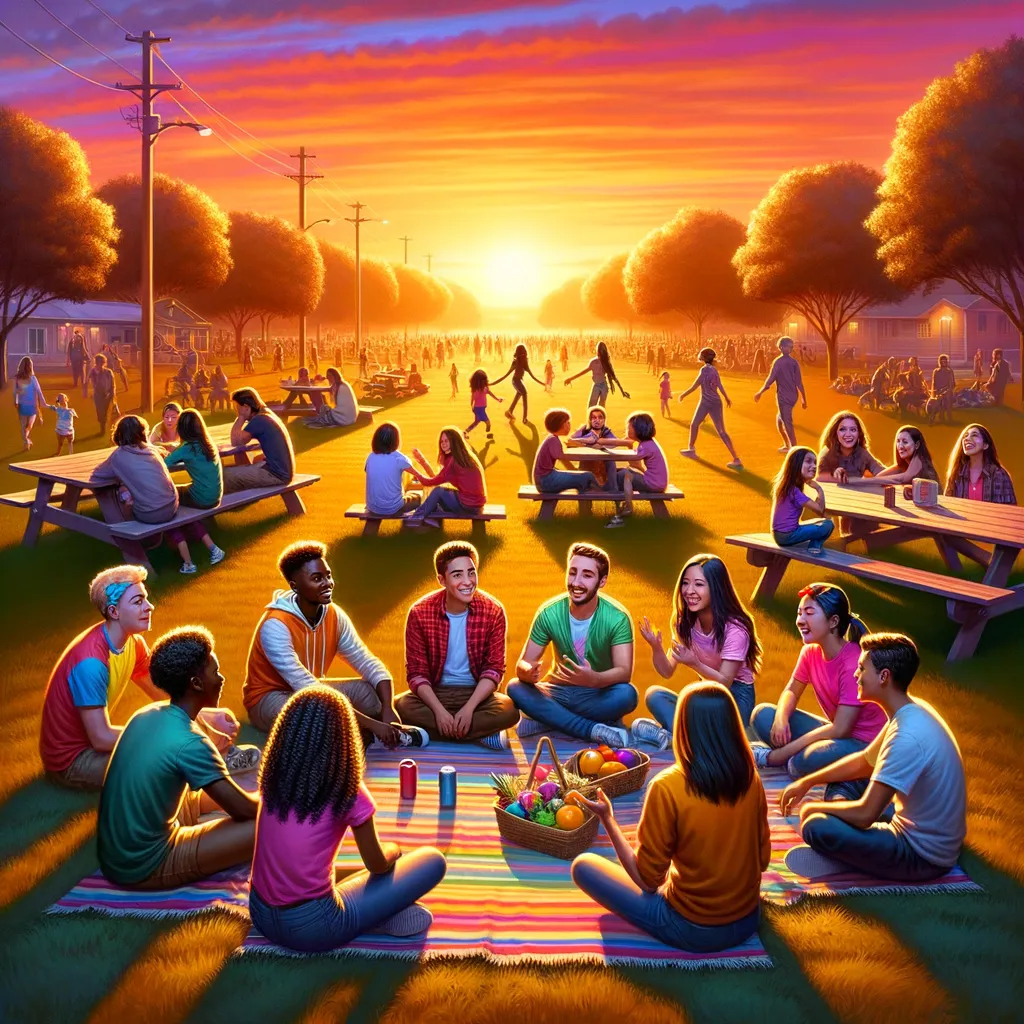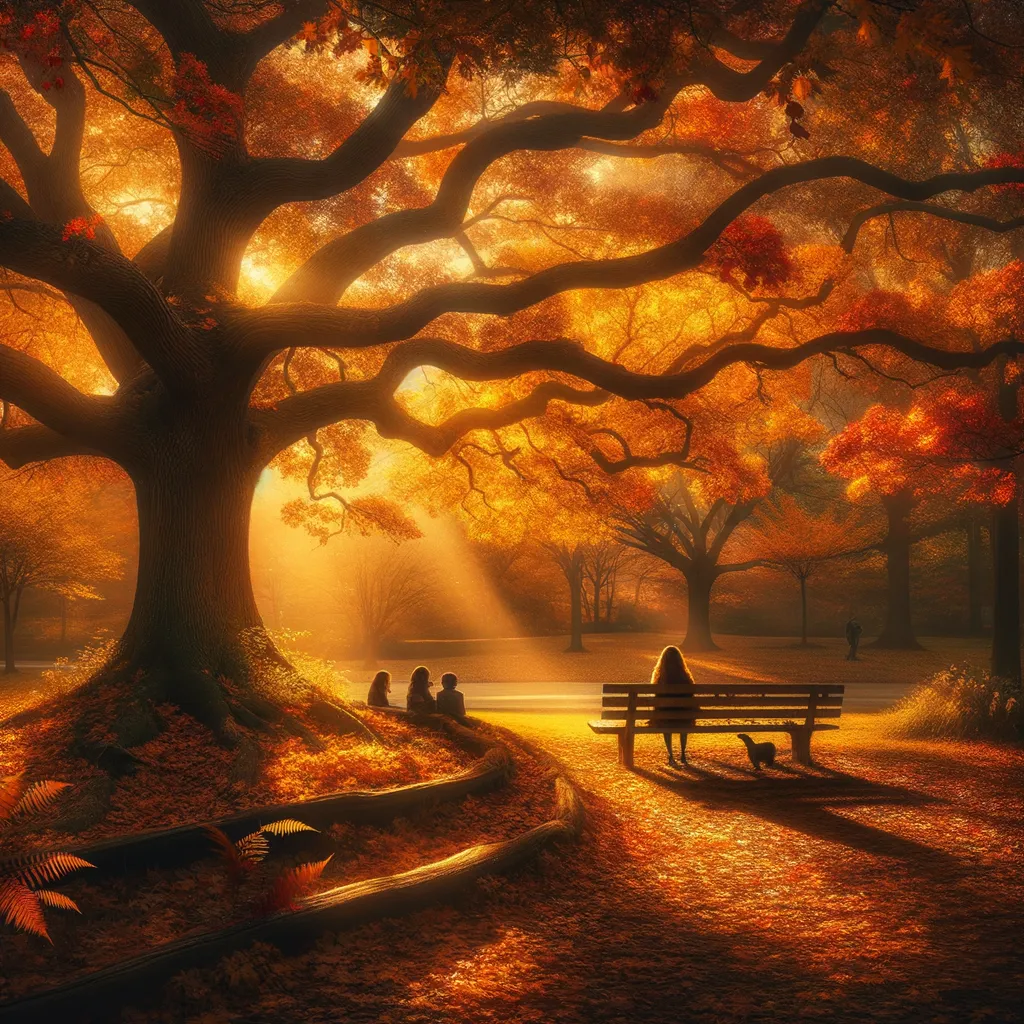Under the Sun: Unveiling Hidden Stories in Chaos
On a sweltering day in a small town, the local park, once a haven of joy, morphed into a chaotic battleground as frustration simmered beneath the relentless sun. Amidst the clamor of families and teenagers, the narrator’s irritation flared until curiosity nudged them closer to a group of vibrant youths, their laughter revealing dreams and aspirations that painted a different picture. As the afternoon light waned, the park transformed in the narrator’s eyes from a site of annoyance to a vibrant canvas of interconnected stories, each voice contributing to the community’s symphony. With dusk’s embrace, the realization dawned that empathy could dissolve misunderstandings, revealing the rich tapestry of shared human experience. Leaving the park, the narrator carried a newfound understanding: beneath every frustration lies a narrative waiting to be discovered, urging us to listen more closely to the world around us.
In the memory of August 3, 2001, I recall the sweltering heat that enveloped our small town like a thick blanket, pushing tempers to their limits and patience to the edge. The local park, once a sanctuary of laughter and joy, transformed into a battleground of frustration. Families sprawled on picnic blankets, children darting between swings, while the cacophony of laughter clashed with the persistent hum of the nearby highway. It was a peculiar juxtaposition—nature’s beauty marred by human chaos. That day, beneath the relentless sun, I felt a growing irritation toward the very fabric of our community.
As the afternoon wore on, a commotion erupted near the park’s entrance. A group of teenagers had gathered, their boisterous energy spilling into the air, igniting a spark of annoyance within me. I watched them, clad in brightly colored shirts, their laughter punctuated by careless shouts, and I wondered how they could be so oblivious to the serenity of the space around them. In my youthful frustration, I yearned for quietude, for an escape from the vibrant chaos that felt so out of sync with my own need for stillness.
Yet, as I moved closer, curiosity wove its way through my irritation. I caught snippets of their conversations, laced with dreams and aspirations, each word painting a vivid picture of their realities. They spoke of summer jobs, college plans, and the looming uncertainties that lay ahead. Suddenly, the laughter transformed from a source of annoyance to a melody echoing the hopes of youth. The realization struck me: these moments of exuberance were but reflections of their lives, their joys mingling with the shadows of their insecurities.
With this newfound perspective, I began to see the park not as a battleground, but as a canvas where the community’s stories were etched in vibrant colors. The families, the teenagers, the elderly couples strolling hand in hand—all were threads in the tapestry of our shared experience. The park became a meeting ground, a place where lives intersected, where the mundane mingled with the extraordinary. In those moments, I understood that every voice, no matter how loud or soft, contributed to the symphony of our community.
As dusk approached, the golden hour bathed the park in a warm glow. The sun dipped low, casting long shadows that danced across the grass. I found myself sitting on a bench, watching the scene unfold before me with renewed appreciation. Children chased fireflies, their laughter ringing like chimes in the evening air, while the teenagers, now quieter, gathered to share stories under the fading light. Each flicker of light seemed to whisper the promise of possibilities yet to come.
In that transformative evening, I discovered that frustration often masks deeper truths. It was an invitation to look beyond the surface, to peel back the layers of misunderstanding that often clouded my vision. The park was alive, pulsating with life and dreams, a reminder that every individual carried their own burdens, joys, and stories waiting to be told. Empathy began to bloom within me, pushing aside the irritations that had once clouded my judgment.
The community’s complexity became apparent; it was a mosaic of experiences, each piece unique yet interconnected. The teenagers, with their raucous laughter, were not merely disruptive elements; they were the heartbeat of our town, a generation forging their path against the backdrop of uncertainty. I marveled at how easy it was to misinterpret their exuberance as mere noise, rather than as expressions of vitality and hope.
As night enveloped the park, the stars began to twinkle overhead, serving as a reminder of the vastness of human experience. I left that day with a heart lighter than before, carrying with me not just the weight of my own frustrations, but the understanding of others’ struggles and joys. The park was no longer just a place; it was a reflection of life itself, in all its chaotic beauty.
Looking back, I realize that the lessons learned that day extend far beyond the confines of the park. Life is often a series of interconnected moments, where empathy can bridge gaps between misunderstanding and connection. The threads of our community, woven together through shared experiences, created a fabric that was resilient and rich in diversity.
In this tapestry of life, what hidden stories might we overlook in our moments of frustration, and how might our understanding shift if we dared to listen more closely?
In the vibrant chaos of life, the loudest laughter often masks the deepest stories, inviting a shift from irritation to understanding.



